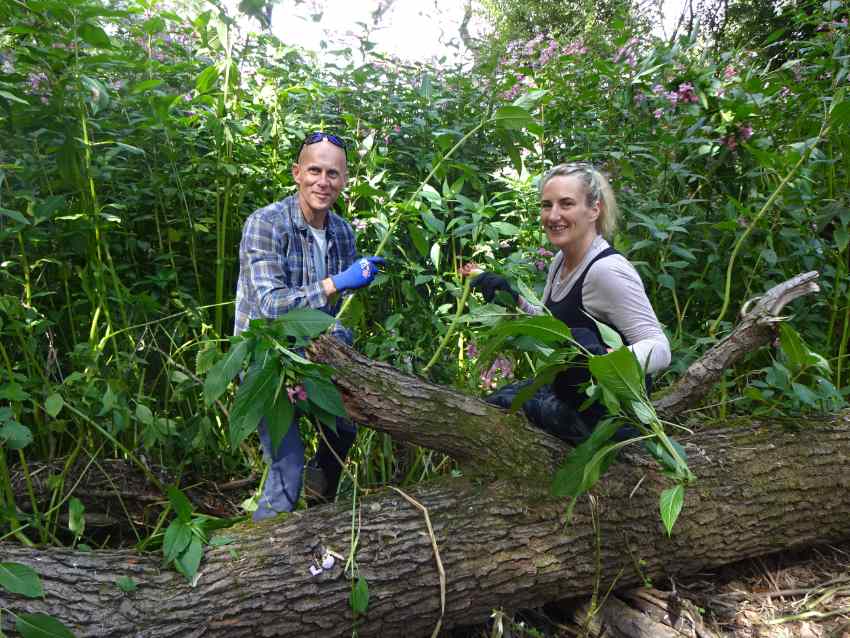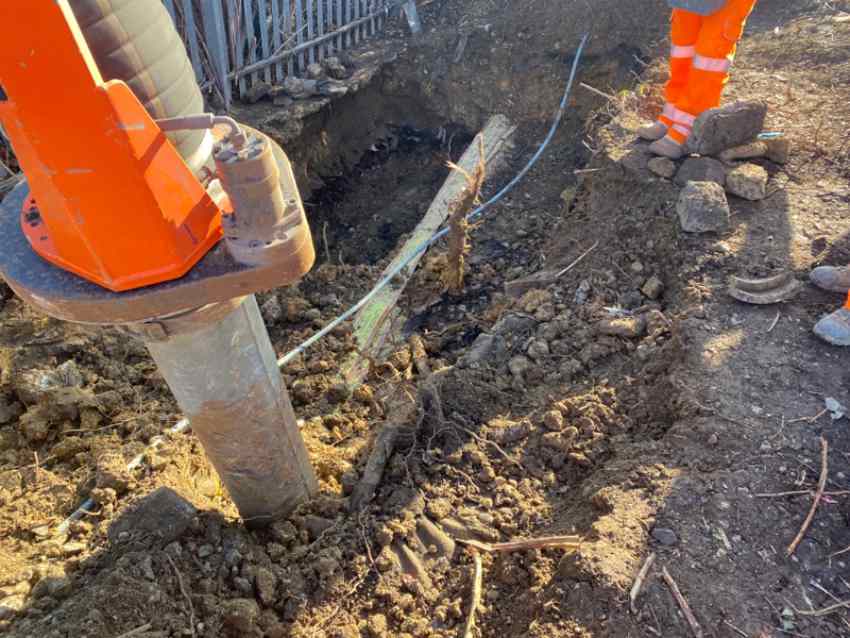Japanese Knotweed Ltd provides specialist services for the control of Japanese knotweed including identification, survey, treatment, excavation and removal. Via their sister brand Environment Controls, the company provides specialist services for the control and removal of invasive and aquatic weeds and amenity weed management packages.
Ground Contamination Ltd removes non-lincensable asbestos in soils.
Easy Engineering: What are the main areas of activity of the company?
The focus of our business is controlling and removing knotweed and invasive weed infestations and ground contamination. Knotweed will take over landscapes, and as seen in the picture it has a huge impact the environment and can destroy ecosystems.
We also provide a watching brief service for clients who wish to use their own resources but do not have the expertise. Our staff will supervise theirs to ensure H&S and regulatory compliance.
E.E: What’s the news about new products/services?
The most commonly used herbicide – Glyphosate will remain an emotive topic of discussion however we have developed ways to reduce usage by up to 60% on some large projects.
Sustainable weed management is also a key decision-making factor for a lot of our clients. To assist them with this, we have designed our own amenity weed management equipment including bespoke built quadbikes. This enables us to deliver contracts for local authorities in the most cost effective and time efficient manner.

E.E: What are the ranges of products/services?
Through our three brands we offer a wide range of specialist control services.
Our Survey Service can be used to scan properties for the presence of invasive species. A relatively low-cost exercise per site, which can detect current and horizon threats for the awareness and action of the property owner/site manager.
We specialise in ‘Herbicide Treatment Programmes’ (HTP) to fit the target weed and needs of the site, and client. Typically, an HTP is provided for 3, 5 or even 10 years depending on the requirement. The programmes provide effective long-term control of invasive weed species including Japanese knotweed. Guarantees on the work can be provided, with an option for an Insurance Backed Guarantee on Japanese knotweed works only.
Often more intrusive removal methods such as Excavation is required – to instantly eradicate Japanese knotweed and other invasives from land. We provide a suite of methodologies to excavate and dispose of invasive species. Waste disposal options include on-site burial, relocation or if preferred removal to landfill. Our methods of excavation and waste handling ensure efficiencies in waste reduction management.
Our excavation teams are trained and qualified to remove Non-Licensable Asbestos in Soils. Due to property deterioration, renovation or development, asbestos in soils may be encountered. We can segregate asbestos containing materials from soils to considerably reduce waste disposal costs for our clients. We provide this as a standalone service or combined with the removing invasives from a site.
We offer bespoke Training Services promote awareness of Japanese knotweed and other invasives within our client organisations. Awareness is ‘key’ in understanding and tackling the spread of invasive species and enables a proactive approach to their management. Our training services are created bespoke to each client and cover identification of knotweed and other INNS.
E.E: What is the state of the market where you are currently active?
Driven from European and UK Government mandates there is need for greater awareness of non-native invasive species and a call for action nationally. Japanese knotweed is just one of a large number of invasive species causing ecological and economical harm to the UK. The invasive weed management and control sector is of growing importance to landowners and managers. There is an increasing importance for companies to provide more sustainable solutions to weed management.
We predict the new ‚knotweed’ will be Himalayan balsam, which can be removed by a variety of methods, seen below hand-pulling.

E.E: What can you tell us about market trends?
In Feb 2023 DEFRA released ‘The Great Britain Invasive Non-Native Species Strategy (2023 to 2030)’, calling for a refreshed strategy being needed to tackle invasive non-native species (INNS) and prevent them from derailing the UK’s wider environmental ambitions. We aim to educate our clients and the wider public on the importance of species management.
Together with this, landowners and commercial enterprises need to demonstrate a practical awareness of Biosecurity and the actions they are taking to minimise risk of spreading invasive species. We are there to advise our clients, and provide practical demonstrations of how we manage biosecurity on projects.
E.E: What are the most innovative products/services marketed?
Integrated Weed Management (IWM) is an evolving requirement for clients and contractors alike to research and embrace working practices in weed control that promote sustainable use of herbicides.
We are active in helping our clients understand IWM through literature, guidance, and training. Activity on IWM promotes the managed application of herbicide on construction sites via better or reduced herbicide usage.
We provide our clients IWM compliant contracting services, through a criterion assessment of each site and invasive weed impact. Remedial methods are promoted that conform to providing good IWM practices. This can include programmes with improved or targeted use of herbicide, or strategies that involve alternative cultural control methods and/or preventative growth actions.
We adopt the use of equipment and technologies that increase the efficiency and efficacy of our work:
Our teams have access to motorised 8m long lance herbicide applicators. These allow access to difficult to reach target weeds, often negating the need and cost of using assisted-lift or two-person working procedures to access.
We have experience in using air-spade technology to extract invasive weeds from within or around obstructions. Air Spade is a compressed air jet tool that we use to extract target soils from ground where mechanical digging is difficult, unsafe, or prohibited due to the presence of underground services or tree roots (from trees to be retained).
We also use Vacuum Excavation (as shown below) that enables direct lifting and removal of contaminated and target-plant-infested soils from the proximity of live underground services. This practice, when applicable for use, will use less equipment and vehicles to traditional excavation which reduces our carbon footprint for the project.

E.E: What estimations do you have for the beginning of 2024?
We predict the knotweed growing season will continue to be earlier than what was seen to be the norm (late March/April). This means firms should consider having earlier surveys carried out.
More invasive species will be added to the 200+ plants labelled invasive, meaning as an industry we will need to adapt our control methods to ensure efficacy of management.
